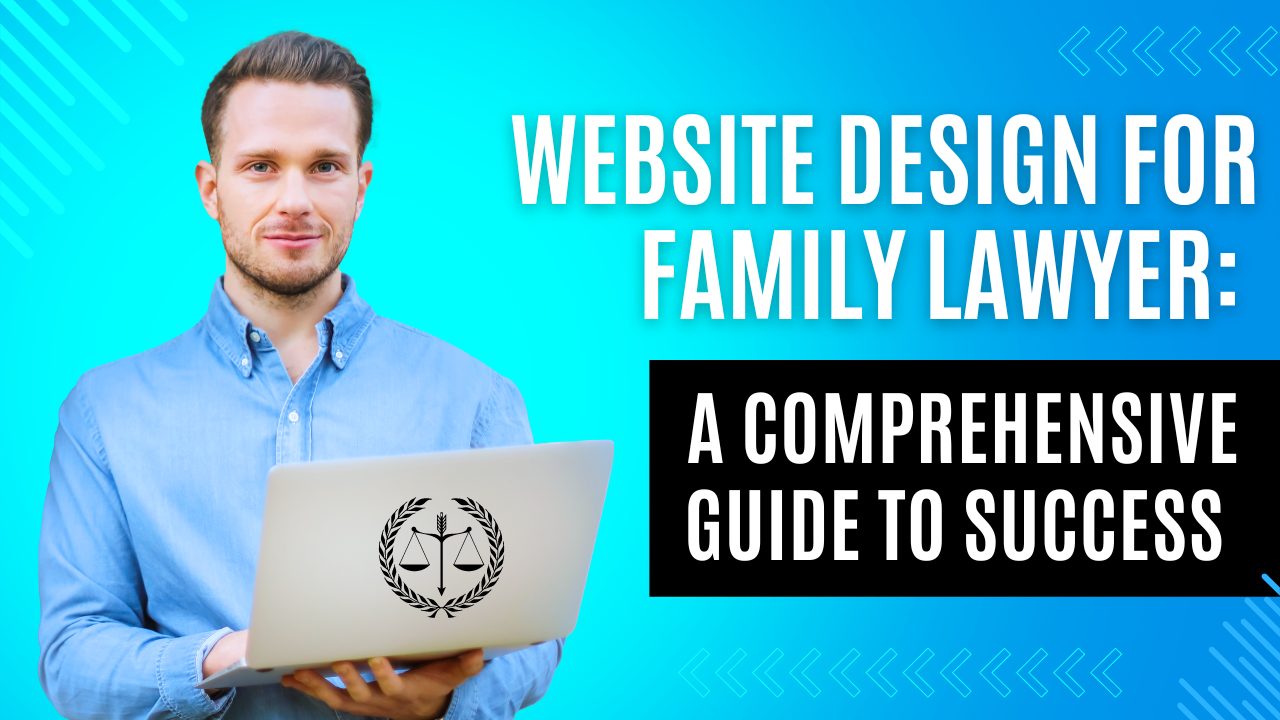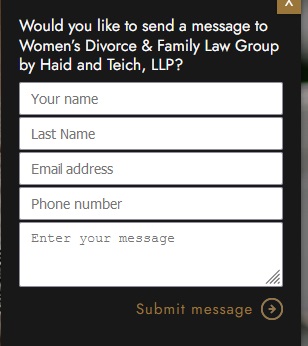Have you ever stumbled upon a family law website that felt welcoming and intuitive, guiding you effortlessly to the information you needed?
Family law website design, where to start?
Let’s look at this in detail:
Building a responsive website design for attorneys
In today’s digital age, the first interaction prospective clients often have with family law firms is through their websites. Just as the intricacies of family law require meticulous attention to detail, so does ensuring a family law firm website is responsive.
But why is this so crucial?
Mobile search accounted for almost 57% of all search queries in one study, and this number is constantly on the rise:
(Source 1)
- The Role of Search Engines: Search engines, like Google, prioritize websites that offer a seamless user experience across all devices. A responsive design not only ensures that your family law firm website ranks higher in search engine optimization (SEO) results but also that potential clients can easily access and navigate your site – whether they’re on a desktop or mobile device.
- Adapting to the Viewer’s Device: A responsive design means your website’s layout, images, and text adjust automatically to fit the viewer’s screen. This ensures that every prospective client, regardless of how they access your site, gets a clear and concise view of your services and expertise in family law matters.
- Catering to Modern Clients: Modern clients use a variety of devices to search for services. Whether they’re using a smartphone during a commute or a tablet at home, your family law firm website needs to be accessible and user-friendly. This adaptability can be the difference between a potential client contacting your firm or moving on to another.
- Enhancing User Experience: Think about it. If a prospective client struggles to read text or view images on your site because it’s not optimized for their device, they might question your attention to detail in other areas, like handling their family law case. A responsive design ensures that every visitor has a positive experience, reflecting the professionalism and expertise of your firm.
By optimizing your website for all devices, you not only improve your search engine rankings but also ensure that prospective clients have the best possible introduction to your services.
Law firm mobile website development
In the world of family law, where emotions run high and stakes are personal, a firm’s mobile website must be more than just functional—it should be crystal clear and mobile-supportive.
Here’s a detailed breakdown of what family law firms should prioritize for mobile devices:
- Choice of Platform and Theme: WordPress stands out as a reliable platform for law firms, thanks to its flexibility and a vast array of plugins. For a mobile-optimized experience, a clean theme like GeneratePress is recommended. It’s lightweight, ensures swift loading times, and offers a professional look tailored for legal services.
- User Experience (UX): Consider a divorced father, navigating child custody details on his phone. He’d need clear menus, intuitive layouts, and easy-to-find contact forms. For instance, a sticky header with a direct “Contact Us” button can be invaluable.
- Swift Loading Times: Compressing images using tools like TinyPNG, minimizing CSS and JavaScript, and leveraging browser caching can make a significant difference. Remember, a few seconds delay can mean a lost client.
- Clear Call-to-Action (CTA) Buttons: Beyond just being prominent, CTAs should be specific. Instead of a generic “Learn More”, opt for “Understand Child Custody Laws” or “Start a Conversation Today”.
(Source 2)
- Content Tailored for Mobile: It’s not merely about concise content but ensuring it resonates with the audience. A section on “What to Expect in Your First Consultation”, with bullet points detailing the process, can be a game-changer for anxious clients.
- Avoid Flash and Pop-ups: Instead, consider subtle banners or slide-ins. For instance, a slide-in offering a free e-book on “Navigating Divorce” can be less intrusive and more valuable.
- Feedback and Reviews: Incorporate a section where clients can easily leave reviews or testimonials. Seeing feedback from a mother who successfully navigated a custody battle can instill confidence in new clients.
- Mobile Local SEO: Ensure that local SEO is optimized. A potential client searching “family lawyer near me” should easily find the firm, complete with directions, operating hours, and a click-to-call button.
By meticulously crafting a mobile website with these specifics in mind, family law firms can ensure they’re not just reaching potential clients, but genuinely assisting them in their time of need.
SEO for Lawyers
In the digital age, a family law firm’s online presence is paramount. But how can you ensure that your firm stands out in the vast sea of search results? The best course of action will be to have a customized SEO strategy that meets your family law firm’s specific needs.
Keyword Optimization
- Family Law Specifics: Tailor your content to address specific family law topics such as divorce, child custody, and alimony. This ensures that prospective clients find you when they search for these terms.
- Local SEO: Emphasize your firm’s location. If you’re based in Boston, for instance, terms like “Boston family law firm” or “divorce attorney in Boston” can be beneficial.
Quality Backlinks
- Legal Directories: Sites like Avvo or Martindale-Hubbell can provide valuable backlinks and also position your firm in front of a targeted audience.
- Guest Posts: Writing articles for reputable legal blogs not only establishes authority but also provides backlinks.
Engaging Content
- Blog Posts: Address common concerns or questions related to family law. For instance, “How to prepare for a custody battle?” or “Steps to ensure a fair alimony settlement”.
- Infographics: Visual content detailing processes like “The Divorce Process in 10 Steps” can be both engaging and informative.
User Experience
- Fast Loading Speed: A slow website can deter potential clients and also negatively impact search rankings.
- Clear Call-to-Actions: Direct visitors to schedule a consultation or read client testimonials.
Reviews and Testimonials
- Google My Business: Encourage satisfied clients to leave positive reviews. Respond to these reviews, both positive and negative, showcasing your firm’s commitment to client satisfaction.
- Testimonials: Feature client stories on your site, giving prospective clients a glimpse into the experiences of others.
Incorporating these SEO strategies can significantly enhance a family law firm’s online visibility. After all, it’s not just about ranking higher on search engines—it’s about connecting with prospective clients in meaningful ways, showcasing expertise, and building trust.
And – in the world of family law – building that confidence is essential.
Law firm web content
An effective firm website design is crucial for family law attorneys aiming to make a lasting impact.
But what content truly resonates with those seeking guidance? There are different types of content you can prioritize to make sure your family law website is optimized and provides valuable information to your target audience. If you want to take your content a step further, include a content strategy within your SEO efforts and see the true impact it can have. This means: including the right keywords, appropriately analyzing your audience, their search intent, their interests, and making sure you are meeting them.
Targeted Blog Posts
Dive deep into the heart of family law issues with articles tailored for the average person.
Let’s look at some examples of articles you can start with:
1. “Child Custody in the Modern Family Law Industry: A Comprehensive Guide”
2. Visitation Rights: What Every Parent Should Know”
3. “Alimony Decoded: A Look into the Financial Aspects of Divorce”
In-depth Articles
For those who need more than just surface-level information. Some content could include:
- Mediation vs. Litigation: Which suits your legal issues best?
- Rights of Grandparents: A topic often overlooked in many family law attorney websites.
Visual Content
Because sometimes, a hero image or a video speaks louder than words.
You could add:
- Client Stories: Real experiences from family law clients, offering both insight and hope.
- Interactive Flowcharts: A visual breakdown of processes like adoption or guardianship, complemented by high-quality images.
Resourceful Downloads:
Equip your client base with valuable resources of content, like:
- FAQ Sheets: Addressing common questions about topics from paternity to legal separation.
- Preparation Guides: Essential tips for those prepping for their first meeting with experienced family law attorneys.
Engagement Content Tools
- Live Chat: An immediate search option for visitors with pressing queries.
- Social Media Profiles: Connect, engage, and build trust with future clients through active social channels.
With a family law lawyer website designed with precision, enriched with content, relevant keywords, and structured with header tags, attorneys can ensure they’re not just seen, but truly heard.
Best family law websites examples
Looking for examples of gold standard family law websites? Here are a couple that caught our attention, and we’ll break down why they shine.
Women’s Divorce & Family Law Group
The Women’s Divorce & Family Law Group’s website stands out as a great example in the family law domain. Their site is rich with resources tailored for those facing familial challenges.
- Engaging Videos: They’ve curated a series of educational films that demystify topics like child custody and alimony.
- Step-by-Step Guidance: Their interactive “roadmap to divorce” offers a clear, sequential breakdown, ensuring no one feels lost during the process.
- Focused Content: From articles on property division to shared parenting, their content directly addresses the concerns of their audience.
The UX is smooth – but they’ve also been savvy with their CTAs. There’s a sticky contact form that’s there if you need it, without getting in the way of the content.
And while any Family Law website can have testimonials, the Women’s Divorce & Family Law Group presents their awards and credentials on the Homepage – further encouraging you to book a consultation:
(Source 3)
Morris Sockle
Navigating the digital corridors of Morris Sockle’s website, you’re immediately struck by its modern color flair and user-centric design. Prioritizing the user experience, the site effortlessly guides visitors through its offerings.
Key Features
- User-Friendly Navigation: A clear menu directs visitors to essential sections like divorce, child custody, and property division.
Their eye-catching logo and contact details are also on a sticky menu – meaning their contact details are there at all times for the site visitors.
- Diverse Services: They offer services ranging from divorce mediation to military family law, ensuring all family legal needs are covered.
And it’s all very easy to navigate from the Homepage.
- Informative Resources: The site offers articles on topics such as “The Divorce Process in Washington” and “Child Custody Rights for Fathers,” ensuring clients are well-informed on various family law topics.
The “The Divorce Process in Washington” article is an example of smart local SEO in action.
- Awards and experience: Morris Sockle is also savvy enough to make sure both of these are mentioned early on the Homepage.
In addition, the site offers a toolkit with guides, videos, glossaries, FAQs, and forms, simplifying the complexities of family law.
Their strapline is also front and center on their Homepage, and it’s excellent:
(source 4)
I mean, if there’s one quality you want in a lawyer, it’s tenacity – right?
Looking for law firm web designers?
We at Nomadic Advertising understand the unique challenges and nuances of creating a website for legal professionals. Our designs are more than just pretty interfaces, they’re built with your clients in mind, ensuring they navigate with ease.
Our tailored approach for lawyers focuses on meaningful tactics that genuinely boost your online visibility, helping clients find you when they need you most.
Through our holistic SEO services, we combine strategy with understanding, ensuring your firm stands out in the digital crowd.
Got questions? We’d love to chat! Feel free to reach out anytime and claim your free 30-minute strategy session, where we can delve into everything we can do for your family law website and your business as a whole!
In the courtroom of digital design, let your law firm be the case everyone remembers
Key takeaways
- A well-designed family law website offers clarity, connection, and guides users effortlessly.
- Responsive design is essential, ensuring accessibility across all devices.
- Search engines prioritize responsive websites, enhancing SEO rankings.
- Mobile website design should prioritize user experience, swift loading times, and clear CTAs.
- SEO for lawyers emphasizes keyword optimization, quality backlinks, and engaging content.
- Effective content includes targeted blog posts, in-depth articles, visual aids, and resourceful downloads.
- Incorporating client testimonials and reviews builds trust and showcases expertise.
- Engagement tools, like live chat and social media, enhance user interaction.
- A family law website’s design and content reflect the firm’s commitment to excellence and client needs.
References
Source 1 = https://www.sistrix.com/blog/the-proportion-of-mobile-searches-is-more-than-you-think-what-you-need-to-know/
Source 2 = https://www.kraayeveld.com/
Source 3 = https://www.womensfamilylawyers.com/
Source 4 = https://www.morris-sockle.com/























